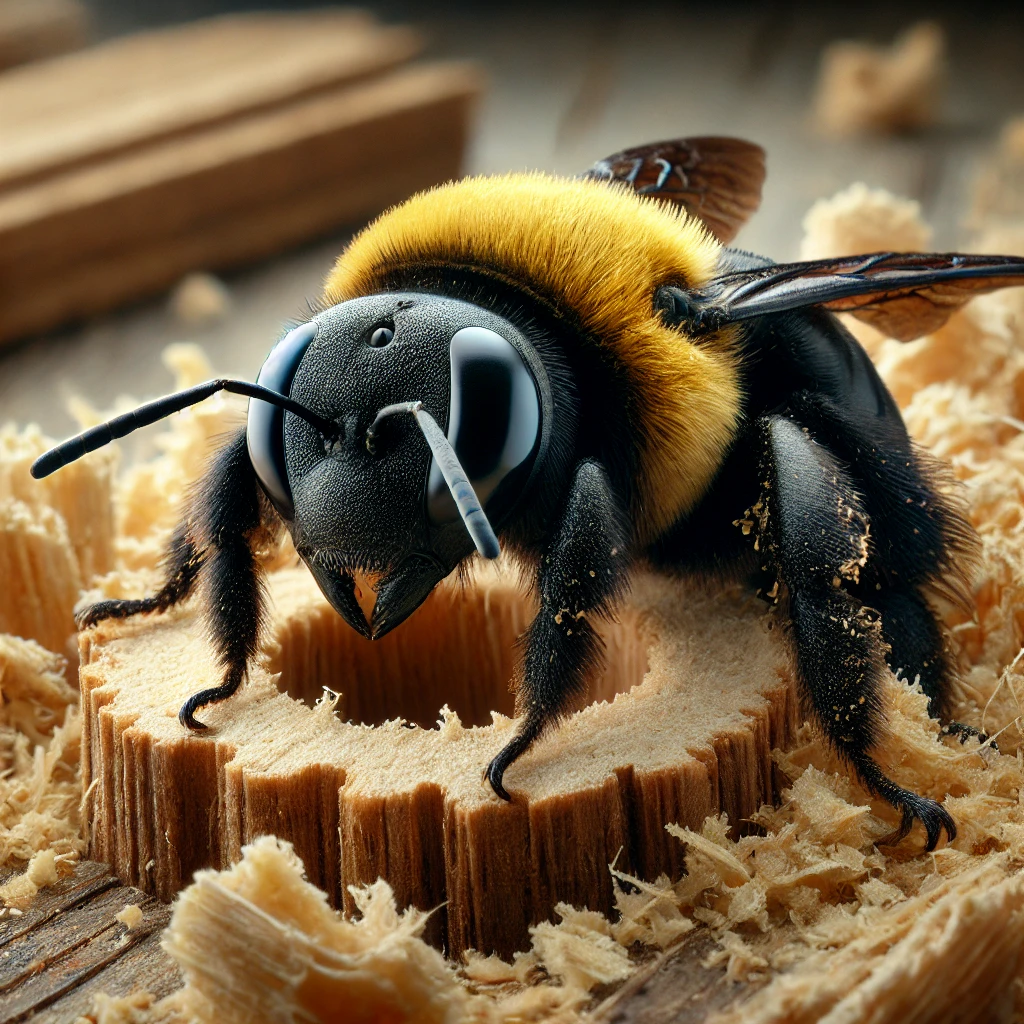When it comes to bee stings, most people immediately think of honeybees and their well-known fate of dying after stinging. But what about carpenter bees? These large, solitary bees are often found buzzing around wooden structures, leaving behind perfectly round holes in decks, fences, and walls. Do they meet the same end after delivering a sting? Let’s dive into the world of carpenter bees to answer this common question and explore their behavior.
Do Carpenter Bees Sting?
First, it’s essential to understand that not all carpenter bees can sting. Only female carpenter bees have stingers, while the males, despite their aggressive behavior and territorial nature, cannot sting at all. The males are often the ones that get close to humans, buzzing loudly and darting around. This can be intimidating, but it’s all show—male carpenter bees are harmless in terms of stinging.
Female carpenter bees, on the other hand, do have stingers but rarely use them. They are not naturally aggressive and will only sting if they feel directly threatened or are provoked, such as being swatted or handled.
What Happens When a Carpenter Bee Stings?
Unlike honeybees, which die after stinging, female carpenter bees do not die after delivering a sting. Here’s why:
- Honeybee Stingers Are Barbed : When a honeybee stings, its barbed stinger gets lodged in the skin of its target. In the process of pulling away, the honeybee tears part of its abdomen, which leads to its death shortly after. This is a defense mechanism used to protect the hive.
- Carpenter Bees Have Smooth Stingers : Carpenter bees, like many other bee species, have smooth stingers. This allows them to sting multiple times without harming themselves. Because their stingers don’t get stuck in their target, they can sting and fly away unscathed.
- No Hive to Protect : Carpenter bees are solitary bees, meaning they don’t have a hive or colony to defend, unlike honeybees. This solitary lifestyle reduces their need to sting, as they are not guarding a community.
Why Female Carpenter Bees Rarely Sting
Despite having the ability to sting multiple times, female carpenter bees are generally non-aggressive and prefer to go about their day drilling into wood and gathering pollen for their offspring. They don’t attack unless they feel directly threatened. Here are some reasons why they don’t often sting :
- Focus on Nesting : Female carpenter bees are more focused on building their nests and laying eggs than engaging with humans or other animals. They bore into wood to create tunnels where they can safely raise their larvae.
- Flight as a Defense Mechanism : Most of the time, female carpenter bees will simply fly away rather than sting. They are more likely to avoid confrontation unless they are physically provoked, such as being squeezed or swatted.
- Male Carpenter Bees Do the Intimidation : Interestingly, it’s often the male carpenter bees that people encounter first, as they patrol the area around the nest. Though they are unable to sting, their buzzing and aggressive behavior serve as a deterrent to predators and potential threats.
How to Avoid Getting Stung by Carpenter Bees
Though carpenter bee stings are rare, you can take steps to avoid provoking them:
- Don’t Swat at Them : If you see a carpenter bee, especially a female, avoid swatting or trying to grab it. Carpenter bees will only sting in self-defense, so giving them space is the best way to avoid a sting.
- Watch for Wood Damage : Carpenter bees are more interested in boring into wood than interacting with people. Keep an eye out for signs of wood damage, such as small holes in decks, fences, or siding, and take steps to prevent further nesting.
- Male Carpenter Bees Are Harmless : Remember, the males that hover around and act aggressively cannot sting. They’re just trying to protect the nest from perceived threats, but they pose no harm to humans.
What to Do If You Are Stung by a Carpenter Bee
In the rare event that you are stung by a female carpenter bee, the treatment is similar to other insect stings:
- Clean the Area : Wash the sting site with soap and water to prevent infection.
- Apply Ice : Applying ice or a cold compress can help reduce swelling and numb the area.
- Use Antihistamines : If you experience mild swelling or itching, over-the-counter antihistamines can help alleviate symptoms.
- Seek Medical Attention if Allergic : While carpenter bee stings are typically not dangerous, some individuals may have allergic reactions to bee stings. If you experience difficulty breathing, swelling of the face or throat, or other severe symptoms, seek medical attention immediately.
Conclusion
Unlike honeybees, female carpenter bees do not die after stinging and can sting multiple times due to their smooth stingers. However, stings from carpenter bees are rare, as females are generally non-aggressive and prefer to go about their nesting activities without conflict. Males, while intimidating, cannot sting at all. By understanding the behavior of these bees, you can better coexist with them and minimize the chances of getting stung.





